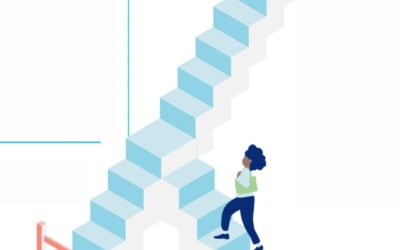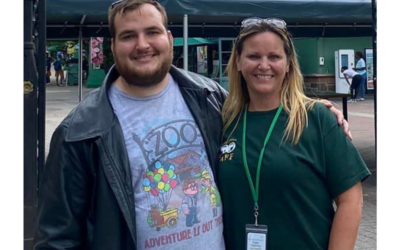By: Imme Hüttmann, PhD, Associate Consultant
Have you heard of the Coastline Paradox? It posits that it’s impossible to accurately measure a coastline. Take Norway as an example. Its shoreline looks like ink on wet paper—jagged, with fjords deeply interrupting an ambiguous main line. If you measure Norway’s coast using a kilometer-long measuring stick, you’ll calculate a certain length. Break the stick in half to measure again, and the coastline will be longer, because you can better account for the nooks and crannies that are part of the shore. The smaller your unit, the longer the coast, until you reach an infinitely small unit—and an infinitely long coast?
Measuring DEAI is a bit like the Coastline Paradox. You can always use a finer grain size to get more accurate results. If you count how many BIPOC staff you have in your organization, the question inevitably follows: are they distributed evenly across departments? And if they are, how long have they been there? Do they feel supported? Alone? The list of questions can go on and on, until you reach infinitely small units to measure an infinitely large topic.
Why Evaluate DEAI?
DEAI evaluation may seem daunting, but organizations are increasingly taking on this challenge. Why? It helps them stay on track by identifying weaknesses to address and strengths to build on. It shows stakeholders how their efforts and resources are (hopefully) yielding positive results. Additionally, periodic evaluation demonstrates commitment and a long-term investment in efforts that go beyond performative measures.
If you’re considering measuring DEAI in your institution, you’re already taking a first step in equity accountability. Regardless of your institution’s size and resources, you can begin with a larger measuring stick to assess how much further you can go in your journey towards a more equitable institution. Here are a few basic considerations for you to get started:
Inside or Outside?
Consider if you want to measure DEAI in your institution internally or with external support. An internal evaluation demands less resources and benefits from staff being familiar with the structures that are in place. However, focus groups and interviews are commonly used to measure DEAI-related efforts, and participants might feel uncomfortable or vulnerable sharing delicate information with a colleague. Conducting an evaluation internally might affect objectivity, anonymity, and trust. An external evaluator should be able to overcome these obstacles but will need resources like time, people, and documentation to understand the organization better and form a complete picture.
Nothing About Us Without Us
If an evaluation is exclusively conducted by people from a dominant demographic group, questions and analysis will almost certainly be skewed. For instance, an evaluator might overlook how gender non-binary experiences vary from binary experiences if gender diversity is not part of their reality.
There are many types of evaluation you can consider to address these blind spots. For example, Culturally Responsive Evaluation helps eliminate bias, include more voices, and obtain more accurate results by encouraging diversity in all stages of the evaluation. You can take small steps too, like running questions past an affinity group to identify potential pitfalls.
Spheres of Influence
Nonprofits are inherently intertwined with stakeholders like visitors, partners, and local governments, and equity efforts should transcend internal barriers to reach them. If you’re holding regular DEAI trainings in your organization but your community partners don’t experience the results, something isn’t right.
When thinking about DEAI evaluation, consider expanding the scope of analysis beyond staff and volunteers to see how your organization’s efforts are being perceived from different viewpoints. Projects like Measurement of Museum Social Impact are developing tools that can serve as a base for a more comprehensive evaluation.
Deep into the Weeds
There’s something comforting about seeing hard numbers in a report: they look real and reliable and are great for making impactful presentations. However, quantitative research can be myopic and may affect underrepresented populations.
I’ve personally found that open-ended questions work especially well with POC participants and help overcome blind spots because they let people comment freely on their experiences. Although analysis can be challenging due to the varied response length and content, it’s well worth the effort. When measuring DEAI in your organization, secure a space where people can express themselves openly.
Open That Can of Worms
There’s no way around it—the results of a DEAI evaluation will be unexpected and difficult. Because inequity is systemic, it is hard to foresee, and it just isn’t easy-breezy. The anticipation of negative results might seem daunting, but don’t let it discourage you. This is the first, necessary step to create meaningful and positive change. And evaluation is about change. If you wanted to keep the status quo, you wouldn’t bother measuring DEAI in the first place. So, stay open, committed, and transparent about where you are in your diversity journey, and don’t forget your goal along the way.
These are only a few broad-brush strokes on measuring DEAI in your institution. There’s much more to think about, like equitable data collection, action planning, and intersectionality, but we would be getting into smaller measuring sticks.
Like the Coastline Paradox, DEAI evaluation may look like an infinite task, but that doesn’t mean that it’s pointless or that it doesn’t yield results. Rather, it means that while results vary in their granularity, they’re never really wrong. As nonprofits with the power to shape society, it’s our responsibility to go the right way, one step at a time.
Canopy Strategic Partners is available to assist with preparing, conducting, and assessing your DEAI evaluation. As leaders in diversity strategy, it’s our belief that addressing complex problems requires the voices of people with varied experiences and insights. We believe that promoting diversity, equity, inclusion, and accessibility will help us achieve a more just future for all. Learn more about our diversity strategy and contact us if we can be of assistance to your organization.





